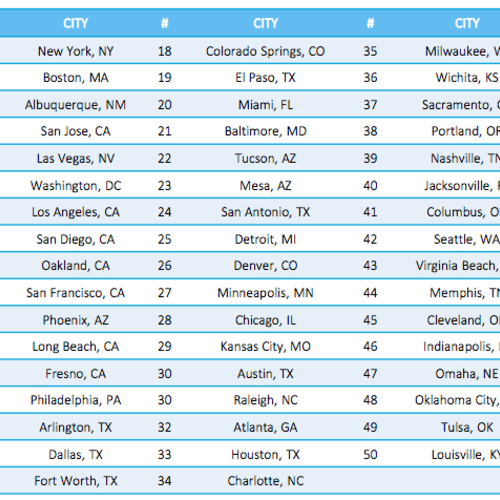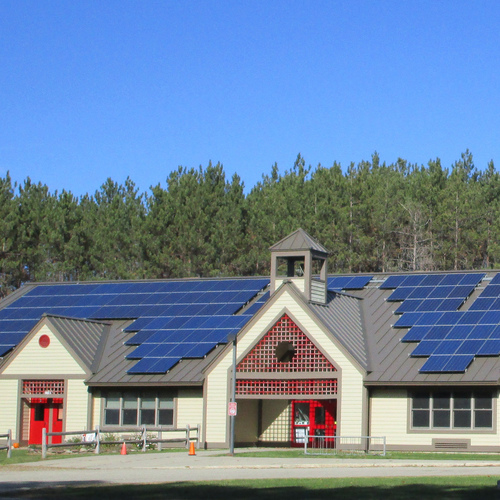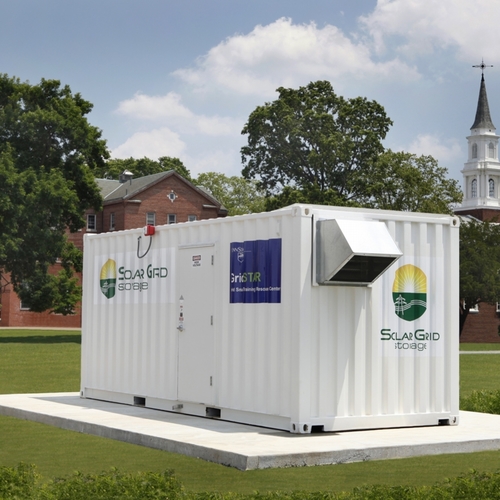
Image Credit: CarstenE via Wikimedia
The world’s largest bank is advising investors and clients that innovations in photovoltaic (PV) technology and rapidly falling costs for batteries and PV equipment will eventually make large, centralized power generating stations in Europe obsolete.
UBS bank, based in Zurich, earlier this month produced a lengthy briefing paper that predicts that an investment in a combined electric vehicle / PV installation / battery system would pay for itself in as little as 6 to 8 years by 2020, without any subsidies.
“We see Europe, and in particular Germany, Italy and Spain, leading this paradigm shift due to high fuel and retail electricity pricing,” UBS analysts said.
Battery costs should plummet by 50% or more by 2020, the bank said, leading to higher EV sales and also increasing the demand for stationary batteries to store excess electricity generated by PV systems.
“Large-scale power generation, however, will be the dinosaur of the future energy system: Too big, too inflexible, not even relevant for backup power in the long run,” the report said.
The report was discussed in an August 27 article in The Guardian.
Solar is on the cusp of becoming a competitive power technology
In Europe, UBS says, PV panels and batteries “will be disruptive technologies.” The biggest weakness of PV arrays is their “intermittency,” the ability to produce power only when the sun shines. But this becomes less of a factor as the cost of lithium-ion batteries continues to drop.
By 2020, a battery-powered car will have almost the same sticker price as a car with a combustion engine, but will be able to save 2,000 Euros annually on fuel. “Hence,” the bank says, “it will begin to pay off almost immediately without any meaningful upfront ‘investment.’ This is why we expect a rapidly growing penetration with EVs, in particular in countries with high fossil fuel prices.”
Battery storage will become financially attractive for homes when combined with a PV system and an EV, the report says.
The bank sees steadily declining payback periods for the purchase of PV panels, electric cars, and batteries, and a simultaneous increase in the return on investment (ROI). By 2020, the ROI will reach 7.3% with payback at 7.6 years. By 2030, the payback will be about 3 years and the ROI will rise to about 11%.
“Looking at the economics from a [profit and loss] point of view,” the bank says, “we believe the combination of EV+solar+battery will save 1,000 Euros per year, compared with a conventional car and no solar system on the roof. This is based on an assumed 20-year life for the solar system, a 10-year life of the car, and 4% cost of capital.”
Not all utilities will be affected equally
In gauging the impact on electric utilities, UBS said the number of end customers and the size of the distribution grid would be key indicators. “The closer utilities are to the end customers, the better they should be able to benefit from the transformational changes,” the bank says. “…We think the generation-heavy utilities will be relative losers, as large-scale power stations will hardly fit into the new, decentralized electricity world.”
“In this decentralized electricity world, the key utilities’ assets will be smart distribution networks, end customer relationships and small-scale backup units,” UBS said. “Utilities should be able to extract more value in (highly competitive) supply activities, as customer needs will be more complex.”
In the United States, the increase in the number of grid-tied residential PV systems has some utilities worried that conventional business models will slowly weaken. Electric utilities in a number of states have sought regulatory approval for surcharges for solar customers to offset they revenue they lose from lower sales.
But the conclusions of UBS about European utilities doesn’t translate directly to the U.S. because energy costs are much different. Among the 28 members of the European Union, for example, the average cost of electricity is about 26 cents per kilowatt hour (kWh), according to the European Commission, while the average price in the U.S. is pegged at 13.14 cents per kWh by the U.S. Energy Information Administration.
The difference in gas prices is more dramatic. A gallon of gas in Norway is currently more than $10 per gallon (1.930 Euros per liter), and more than $8 per gallon in Germany and the United Kingdom. Prices in the U.S. now average about $3.50 a gallon for regular gas.
Weekly Newsletter
Get building science and energy efficiency advice, plus special offers, in your inbox.















3 Comments
Great for the economy!
Decentralizing energy will be great for the economy. When we are no longer affected by fluctuations in energy prices and supplies, the economy will be much more stable.
What about us Northerners?
In New Brunswick, Canada, our hours of daylight in the winter precludes using solar for home power, let alone an EV. Just the power for my home is 45 Kw hrs per day in January. With about 3.5 hours of sunlight per day, that is about 13 Kw of PV output. Currently I have room for about 8 KW on my roof, if I cut down all the trees on the south side of my house. I guess I need to build a highly efficient house with more southern roof exposure.
Response to Roger Williams
Roger,
You're right -- in northern latitudes, PV will never supply the bulk of electrical usage in December and January. A stable microgrid will require other types of generation in winter -- perhaps from wind, biomass, hydro, tidal power, or good old fashioned fossil fuels.
Log in or create an account to post a comment.
Sign up Log in